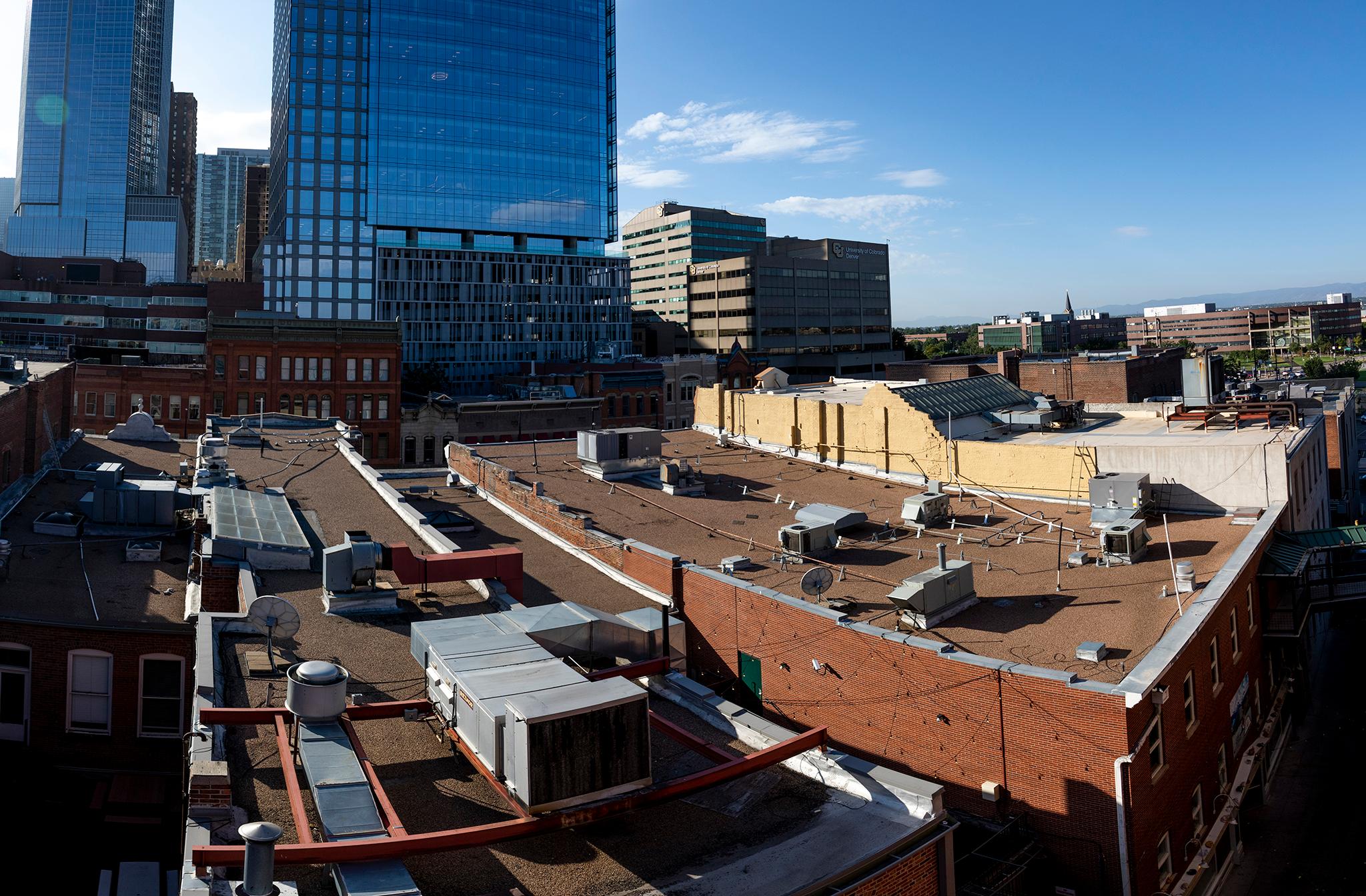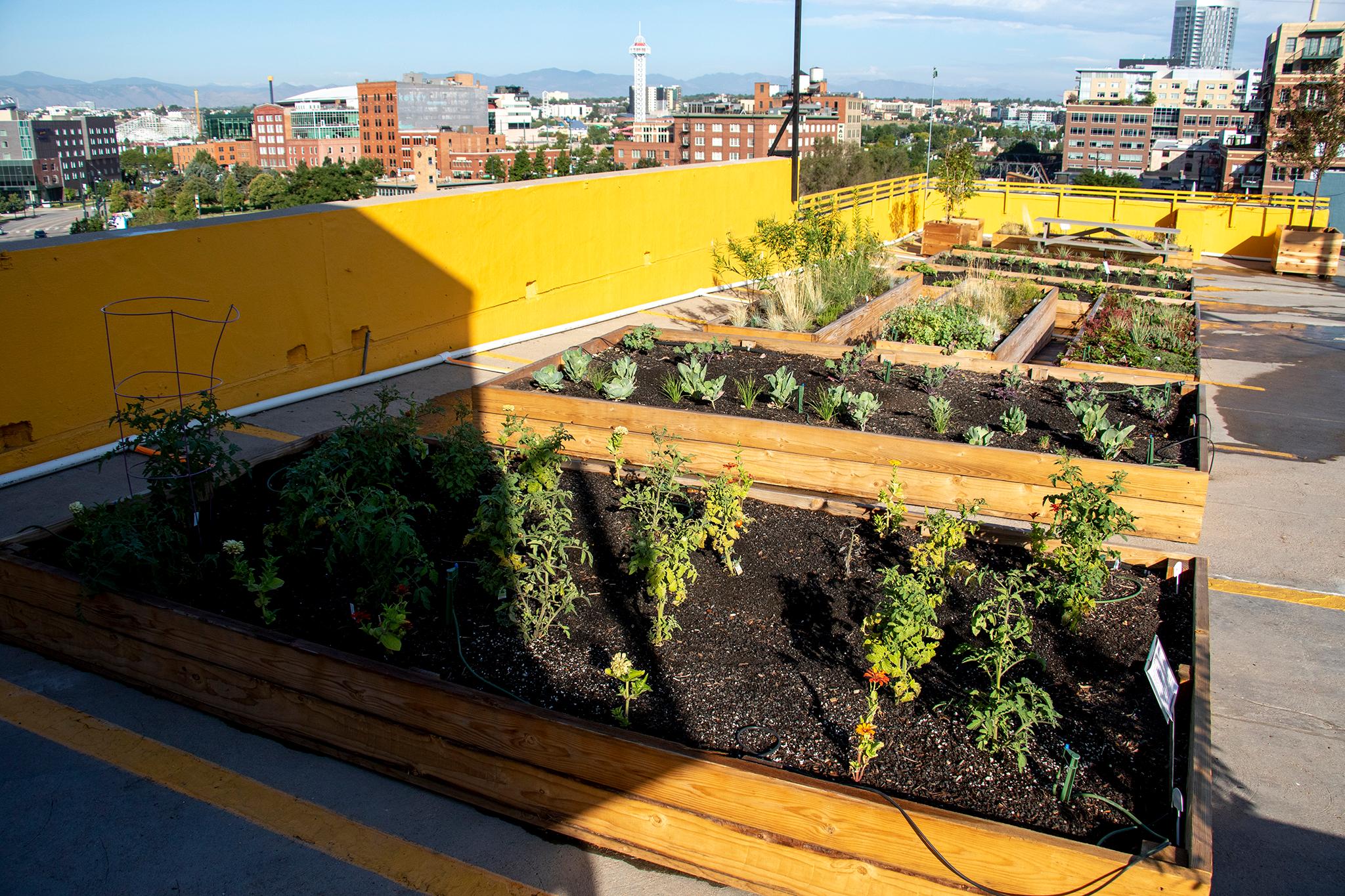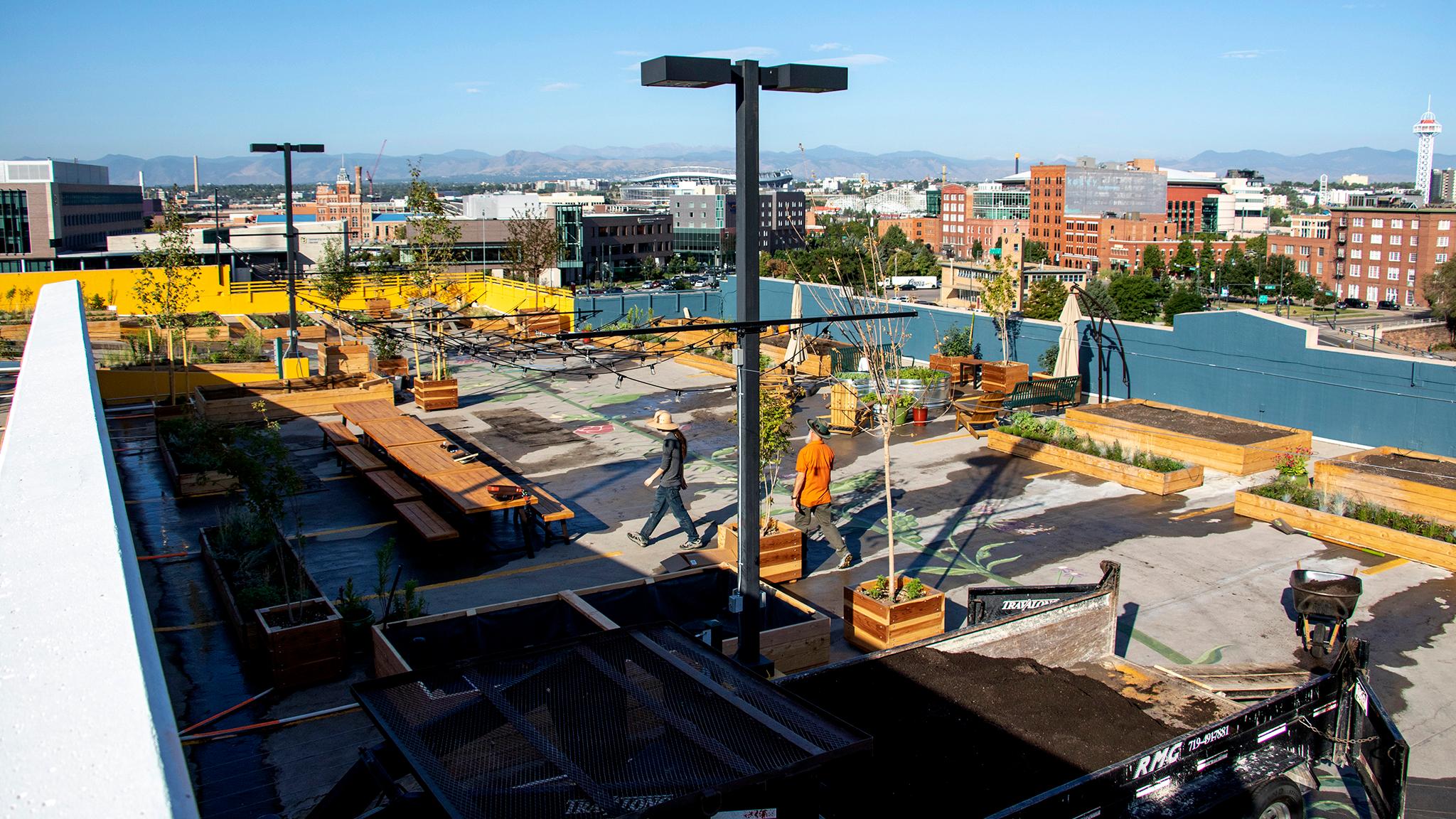By 8:30 a.m., the digging had only just begun and the sun was already beating down on Ed Kennedy's felt green hat. Up here, six stories above Larimer Square, even the morning heat can be intense. It's a challenge most farms don't have to deal with.
There are a lot of things growing above Larimer Square. And it's not just vegetables in the 40 planter boxes that have replaced parking spots atop the garage. The elevated farm, dubbed Larimer Uprooted, is a testing ground for what rooftop agriculture could look like in the city.
There are a lot of unknowns when it comes to growing plants so high up, especially in the country's interior. Big coastal cities have already established how to run large-scale operations on roofs in their ecosystems, but it's still the wild west here.
Denver, in particular, also has never had to fit anything like this in its zoning code. Larimer Uprooted is creating the handbook on how to get projects like this started and successfully growing, literally, as they work up a case study on their experiment.

The project is run by Biological Capital, the sister company of Urban Villages which recently partnered with Larimer Associates as renovations of historic Larimer Square draw closer. Grant McCargo, CEO of both Biological Capital and Urban Villages, said Larimer Square's revamped buildings will someday all host gardens.
As climate change and food scarcity become larger existential threats, he said it's time society begin to rethink what urban spaces should accomplish. He imagines a not-too-distant future when many of the restaurants on the street below source ingredients on site. It's incumbent on all of us, he said, to become more efficient.
"We just know that's where we need to go," he said. "We all need to take responsibility."
Getting to green will take some tinkering.
On Friday morning, Kennedy was working to upgrade some of Larimer Uprooted's planter boxes. They used a lightweight soil to avoid stressing the garage's structural integrity, but that wasn't holding the water quite like they needed. As a result, he said, the vegetables up there were a bit stunted. Below his feet was evidence that they needed to tweak the system: water was running out from beneath the planters. It left thirsty roots and, worse, the possibility that water embedded in the garage's concrete could freeze come winter and damage the slab.
This problem creates an opportunity for another experiment. He and his colleagues are trying a few different schemes, variations of a "wicking bed" design that irrigates from the bottom, to see what works best. All of that knowledge will go into their case study, which Larimer Uprooted's ecological designer and evolutionary biologist, Lilly Hancock, said should be out by the end of the year.
The team is using all kinds of tech to conduct their study. Kennedy brings a "mobile weather station" up to the roof to monitor conditions and keep records as they go. He's been measuring normal and infrared temperatures daily.
Hancock said the garage is its own "microclimate," which means the plants up there require special care. The 2,000-square-foot roof varies in temperature across the space. No natural shade means the beating sun can punish their soil with "incredibly" high temperatures. Wind up here can be another issue, although the garage walls offer some protection.
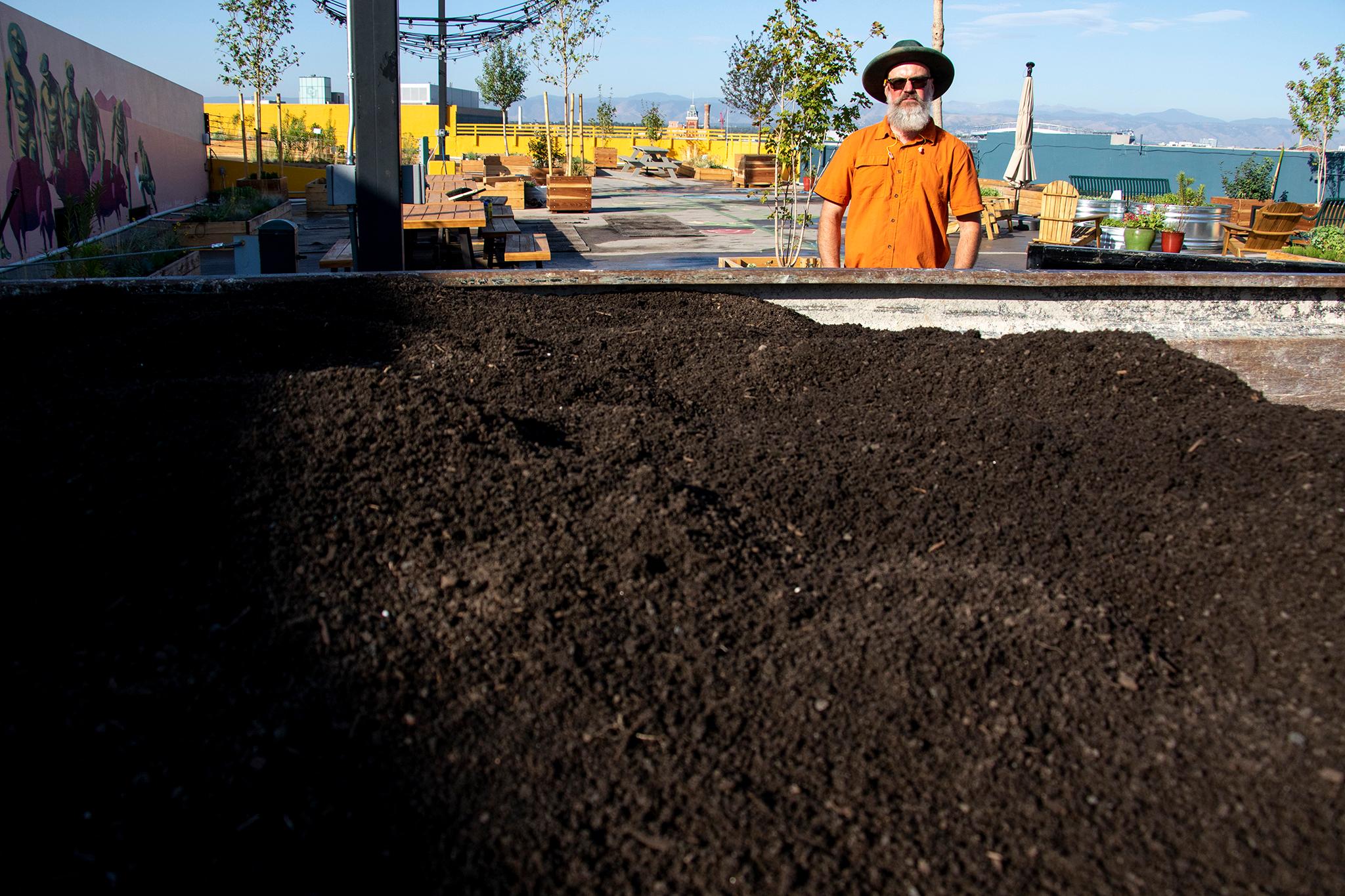
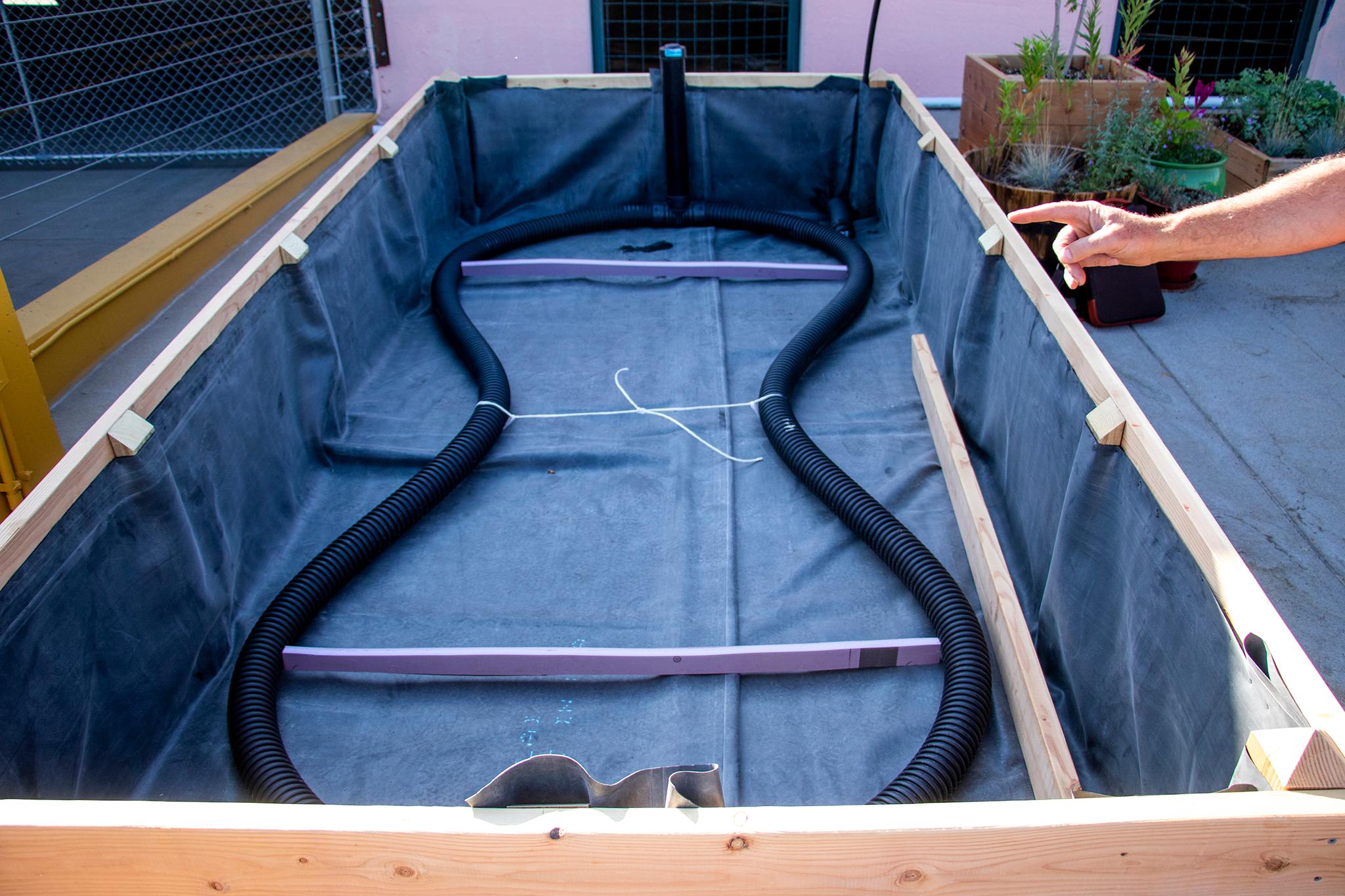
They've learned that crops grown from seed, rather than those transplanted from ground level, fare the best. Wild native plants are doing pretty well up there, but the vegetables have required more experimentation. They're close to figuring out how to provide enough nutrition without overloading the structure beneath it.
Planting six stories high has its perks, too. There's no veggie-eating deer or rabbits to worry about, and they've avoided weeds that might otherwise have sprung up from dormant seeds.
Michael Spade, Larimer Uprooted's horticulture specialist, said the garden is creating an ecosystem where there was once just concrete. He's noticed dragonflies and other insects flock to the roof. They, in turn, have attracted a "camp of birds" that he's twice seen chase away a hawk. The vegetables attracted aphids, too, but they haven't been such a problem since he released a carton-full of ladybugs into his beds.
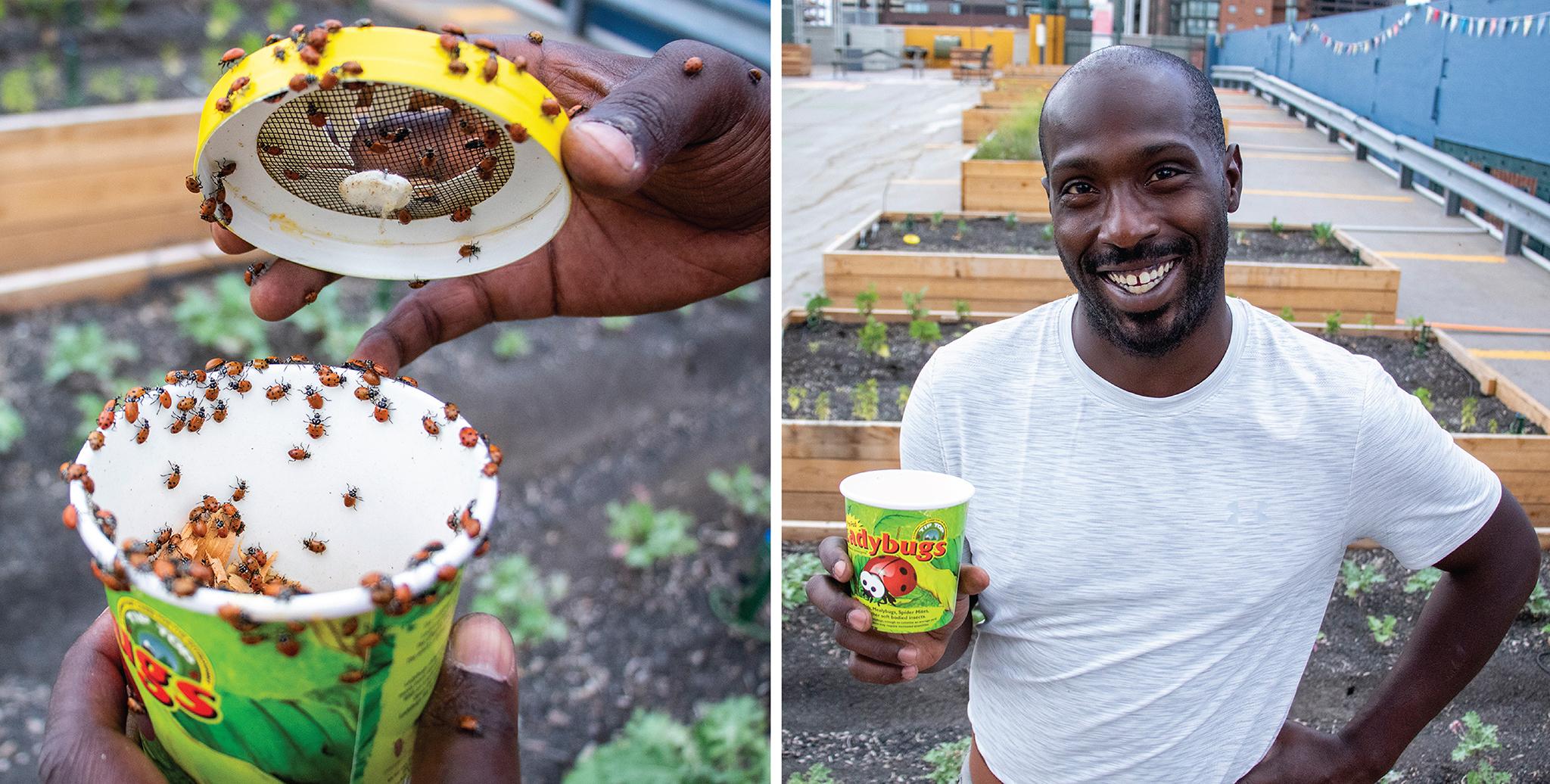
Jen Bousselot, a professor of green roof horticulture at Colorado State University who has helped advise the project, said the kind of research happening at Larimer Uprooted is unprecedented in the region.
"They're a pioneer in the city," she said. It's important work for anyone else who might want to take on the challenge, "putting the next rooftop farm within reach."
Farms like these go above and beyond satisfying the city's Green Buildings Ordinance, but there may be incentives to grow big in the near future.
In 2017, a successful citizen-led ballot initiative created a "green roof ordinance" that required large new structures and renovations to include green space in their designs. A year later, the city tweaked the measure to include a suite of options that would satisfy new sustainability goals.
Today, new buildings measuring larger than 25,000 square feet can create green space, pay into a green building fund, install on-site solar panels, design for LEED certification (or equivalent) or create some mix of these choices to meet what is now called the "Green Buildings Ordinance."
Roofing permits held steady back when the original ordinance passed. Christy Collins, who runs the city's green building program, said developers have continued to accept the rules in the years since.
About 30 projects have been completed since the rules were enacted. She said about 50 more are making their ways through the process.
The suite of available options has allowed for flexibility that Collins said is keeping builders happy. Teams, she said, "are being thoughtful" as they pursue new designs, and no one option has emerged as a city favorite so far.
Larimer Uprooted was not a project required by the ordinance, since the parking structure hasn't been renovated, but some of the buildings at Larimer Square will have to meet the requirements when they're upgraded.

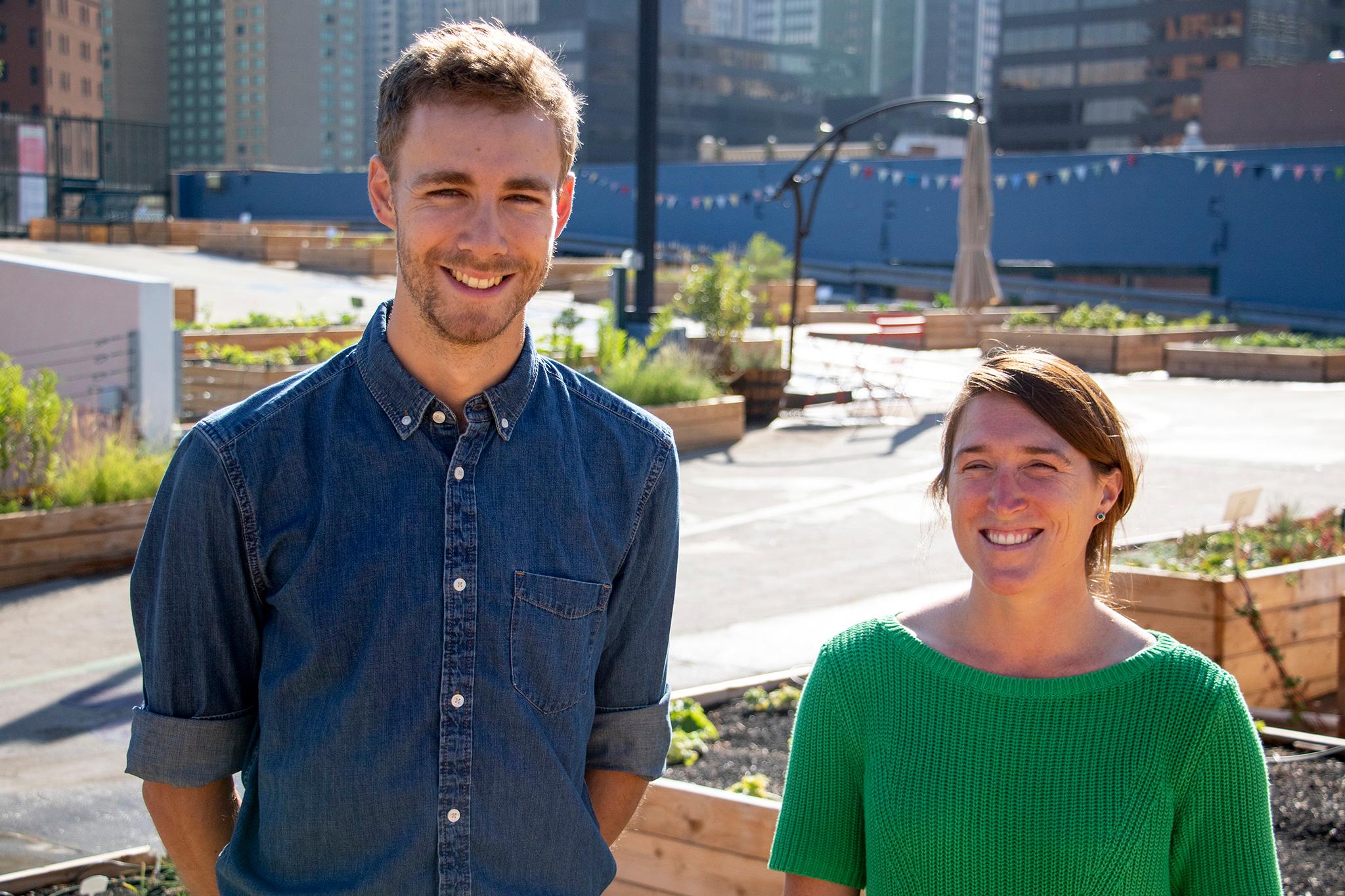
Fulfilling the ordinance will be no problem for McCargo and his team once Larimer Square renovations start. They're building way beyond what the rules stipulate. But Collins said ambitious projects like Uprooted could be rewarded in the future.
The city is in the process of updating building and fire codes to match international standards. In parallel, officials are working up a list of "stretch codes" and "green codes," optional goals that would come with financial rewards for developers. Collins said they're still figuring out what those incentives would be, exactly, but they would all be attached to sustainability features like energy efficiency and, maybe, rooftop farms.
Denver Community Planning and Development has never had to field a rooftop farm plan downtown, so Uprooted's founding forced them to create new pathways in city zoning to accommodate it.
Jacob Ward led Biological Capital's discussions with the city. While he said zoning "doesn't specifically allow rooftop farming," it was apparent from value statements in code documents that Denver wants to encourage this kind of thing.
"They just wanted someone to ask," he said.
Clearing administrative hurdles and learning how to keep their rooftop crops growing means the team will be ready for a winning plan when Larimer Square is redeveloped. It also means anyone else with a similar ambition will have a playbook to draw from.
Even if the tomatoes and kale are a little small this year, Kennedy said, "There is no failure."
Any knowledge gained and passed on will be a huge success.
Overdue correction: Mike Spade was incorrectly called "Mark" in our Aug. 19 newsletter.


